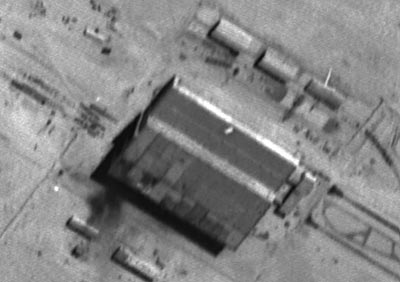Webb’s Giant<< page 1: a giant leap of faith Going publicJim Webb was regularly briefed on these developments. In May 1964 he went public and said “There is some evidence the Soviets are working on a larger rocket, but we cannot say yet for sure.” His reluctance accurately reflected the confusion within the intelligence community. By October 1964 he was certain, saying that “there is increasing evidence” of the new rocket. That increasing evidence was indication that the Soviets were building launch pads equipped with massive flame trenches. In a speech in Missouri, Webb speculated that the Soviets would flight test the rocket by 1967-1968. Webb’s public comments were totally consistent with what the CIA and other members of the intelligence community had concluded. It is probably no coincidence that in October 1964, at around the same time Webb made his public statement, the CIA’s Office of Scientific Intelligence had produced a report titled “New Space Facilities at the Tyuratam Missile Test Center.” Webb would have been briefed on this subject, possibly before the document was actually finalized. But even then there was some confusion within the CIA as to what kind of pad construction was underway. Webb apparently did not comment publicly throughout 1965 on the Soviet development, although in February he did say that “during the last year, the Russians have shown more progress than we thought they could a year ago.”
During this time the United States flew a number of reconnaissance satellites over the massive Soviet complex and in October the intelligence community produced a detailed report on the complex, complete with timelines for the construction of the facility and estimates of the size of various buildings. But there was still no evidence that the rocket was for a lunar landing program. CIA analysts concluded that it could also be intended to launch a large space station into orbit. Why no comments from Webb during this time period? We have no direct evidence. One possibility is that he was advised to keep quiet. But it is also true that he had no motive for discussing the Soviet rocket, and as long as the construction was underway and no rocket was visible, there was little he could add to what he had previously said. A National Intelligence Estimate on the Soviet space program produced in spring 1965 concluded that the Soviet manned lunar program was “not competitive” with Apollo. NASA’s budget was also at its peak. Webb did not have to talk about the Soviet rocket because NASA was clearly ahead in the race to the moon. Fleeing from the pressIn September 1966, stories appeared in the Washington Post and the New York Times stating that the United States had information that the Soviet Union was “developing a rocket booster bigger and more powerful than its own gargantuan and untried Saturn-V moon rocket.” The New York Times article estimated that the rocket’s thrust was 7.5-to-10 million pounds, compared to the Saturn V’s 7.5 million pounds. But both articles stated that U.S. intelligence analysts had not yet seen the rocket itself. Previous estimates of the still-unseen rocket were that it would have a thrust of around five million pounds. But by summer 1966 this estimate had been increased, although exactly when and why the CIA increased its estimate remains classified. Again it was probably no coincidence that these press leaks occurred in September, as the National Photographic Interpretation Center was finalizing what by now was an annual report on the launch complex. That report was officially dated October 1966, but drafts of it would have circulated throughout the intelligence community, and to some NASA officials, beforehand.
In this case the press leaks apparently created problems for Webb, for they soon appeared in both the Post’s sister edition, the Herald Tribune European edition, and the New York Times European edition while Webb himself was touring Europe. Webb immediately returned home from Bonn, Germany because, as he explained to President Johnson, he “felt it unwise to expose myself to questions by the European press with respect to this report of a new large Russian booster.” Webb clearly did not want to undercut an upcoming announcement by Lyndon Johnson about space cooperation with the Germans. Although Webb ducked the issue in early September 1967, a month later at the International Astronautical Federation conference in Madrid there was widespread discussion and speculation about the new Soviet rocket. But what is most notable is that for over two years, although he had plenty of information that the Soviets were developing a new rocket, Jim Webb apparently never mentioned it in public. |
|
